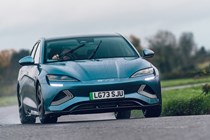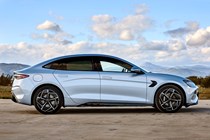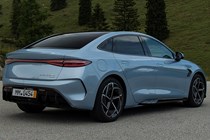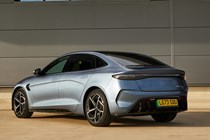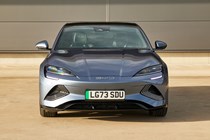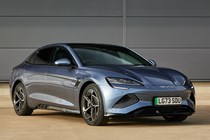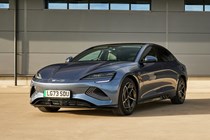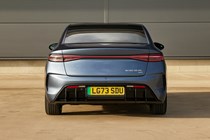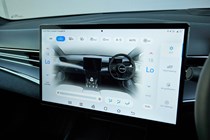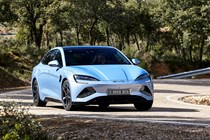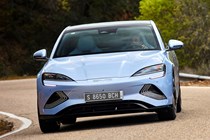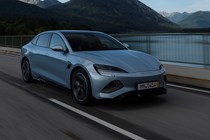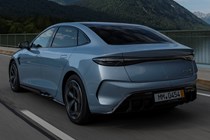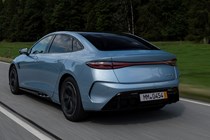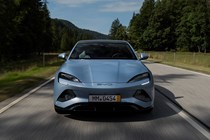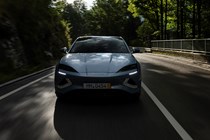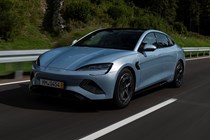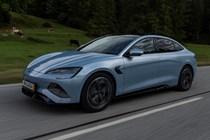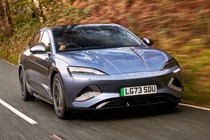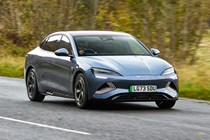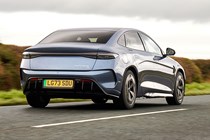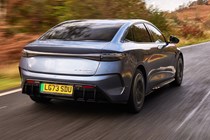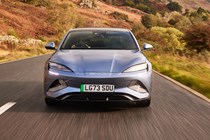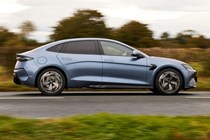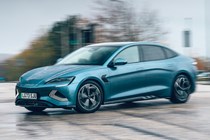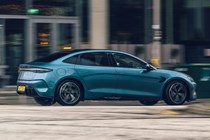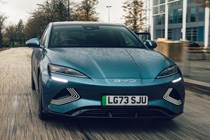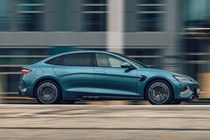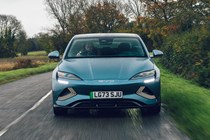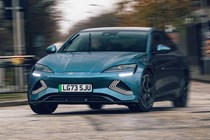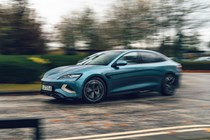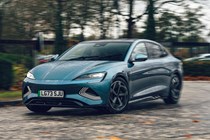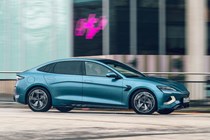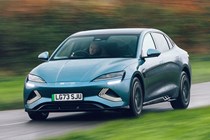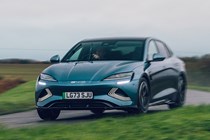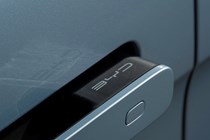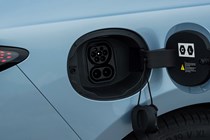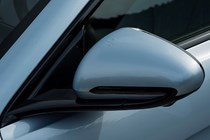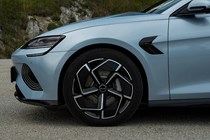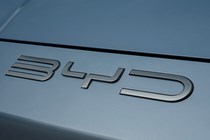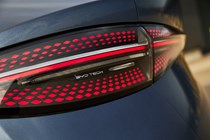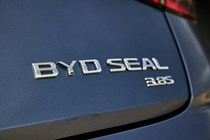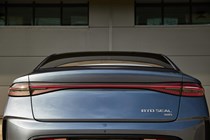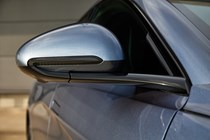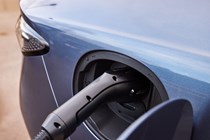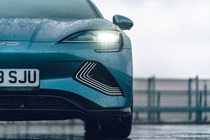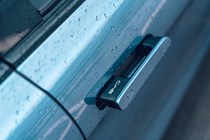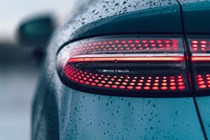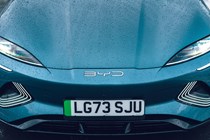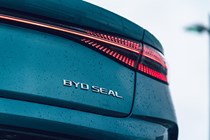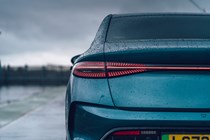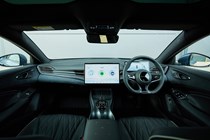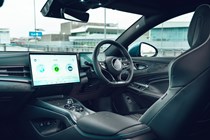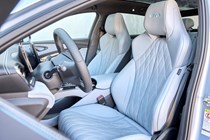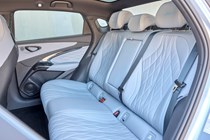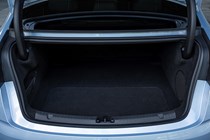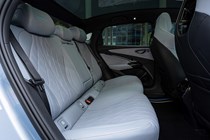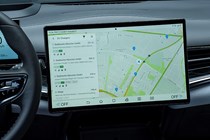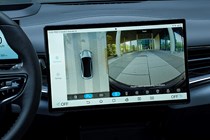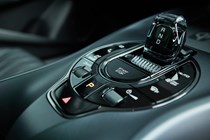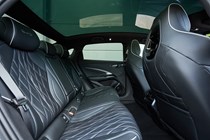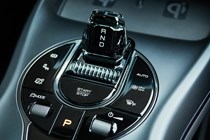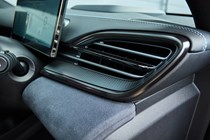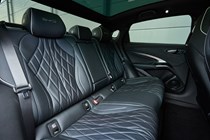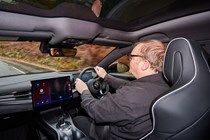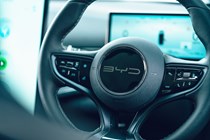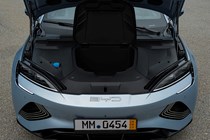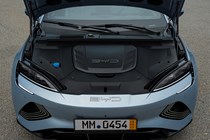
BYD Seal engines, drive and performance
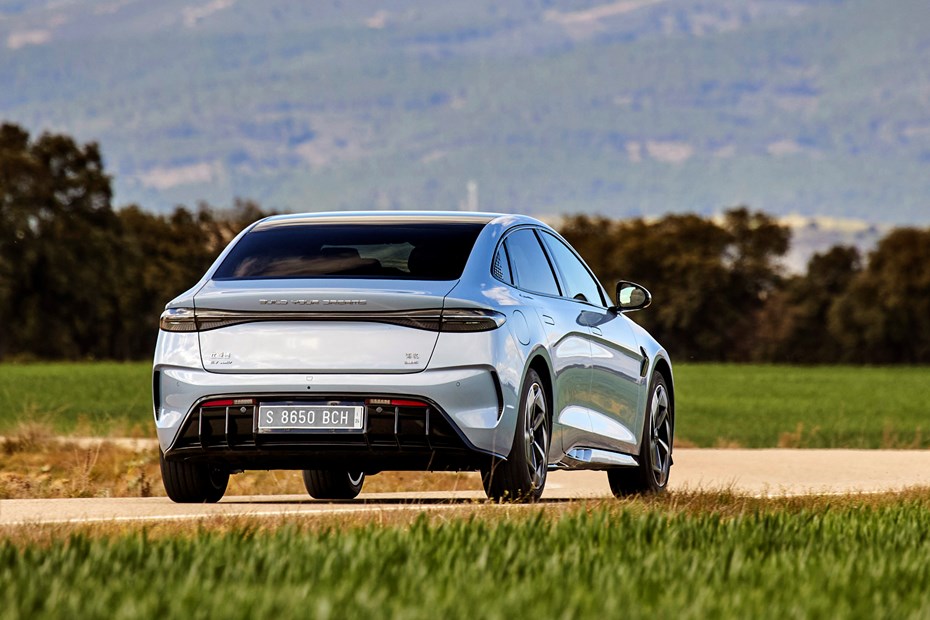
- Just two models available… for now
- Entry-level Design is hot-hatch quick
- Excellence model has 530hp
What power options are there?
The BYD Seal’s model range is simple – there are just two models, ranging in power from the 310hp rear-wheel drive Design to the 530hp four-wheel drive Excellence. That compares well with the Tesla Model 3’s similar line-up. That boasts 279hp (for the single motor rear-wheel drive Standard Range) and 394hp for the four-wheel drive Long Range, meaning the bestseller is outgunned by its Chinese rival.
The Design is good for 0-62mph in 5.9 seconds – quicker than Long Range Tesla Model 3. Maximum speed is limited to 112mph and, although it packs less power than the range-topping all-wheel drive Excellence, it feels alert and genuinely quick when you put your foot down. In reality, then, it doesn’t feel that different to its more expensive counterpart.
We spent most time in the 530hp all-wheel drive Excellence. It’s very responsive regardless of drive mode, leaping to action with the merest brush of the throttle, and driving it smoothly will take a short period of acclimatisation.
It has two motors and is more powerful than the (currently unavailable) Tesla Model 3 Performance, although the Seal is slightly slower from 0-62mph – it takes a rapid 3.8 seconds. BYD is so proud of this statistic, it’s added a badge to the bootlid bearing the legend ‘3.8s’.
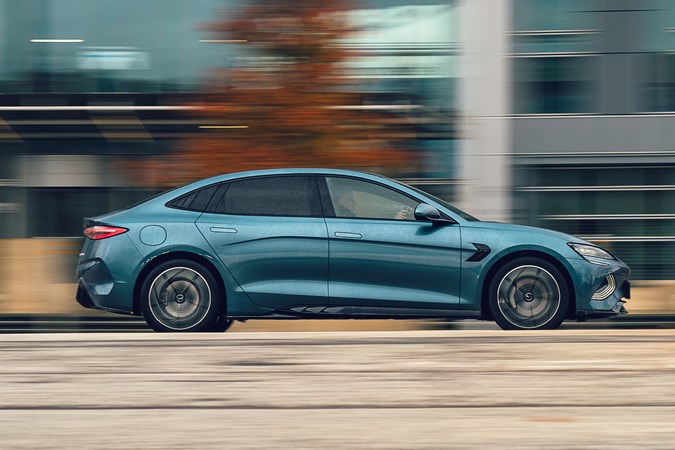
What’s it like to drive?
- The Seal feels like a genuine sports saloon
- Agile roadholding and responsive steering
- Some driver assistance systems are intrusive
We’ve driven the Seal on a mixture of motorways, A-roads and city streets, as well as on track and the news is good. The handling, steering, brakes and ride quality are all up to scratch and it’s impressively refined at a cruise.
Drive is accompanied by a unobtrusive EV hum, and once up to speed, it’s hushed thanks to very effective door sealing and double-glazed side windows. The steering is quick and well-weighted, although in Sport mode, it’s probably a little too responsive for most tastes. Drive it in Normal mode and it’s still sharp and responsive, but it’s easy to adjust to and perfectly judged for its role as a sports saloon.
For performance lovers, the sheer acceleration (of both versions) and agility make the Seal a rewarding drive. It’s not quite as involving as a BMW i4, but it’s certainly more fun than a Hyundai Ioniq 6, and has huge safety margins.
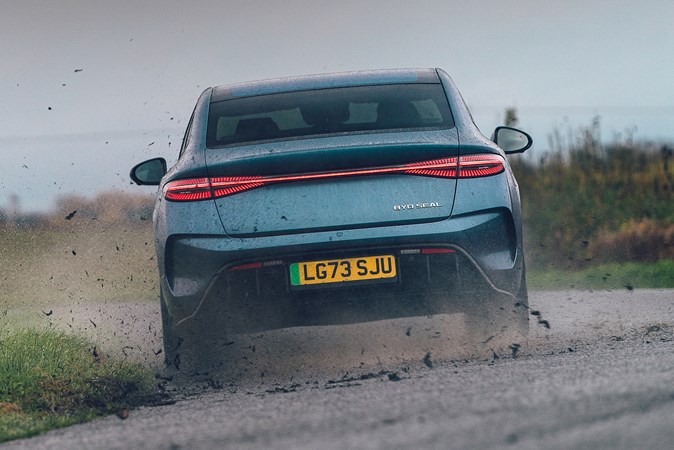
Niggles? The lane-keep assist can be a little too eager to throw an alarm chime, and the steering wheel can tug insistently but it’s no worse than its rivals on that score. Also, there’s there’s no point disabling the stability control for more fun, as it just gets scrappy when you do. The electronics do a lot to prevent the front tyres from spinning up on the four-wheel drive version, though.
The ride comfort is on firm side, but again, that’s inline with its brief as a sports saloon. However, we noticed than the ‘semi active’ system in the Excellence struggled to settle down fully at certain speeds, jittering slightly on seemingly smooth roads.
The Design didn’t suffer from this, quite so much, although it still benefits from the good body control shared with its more expensive counterpart.


